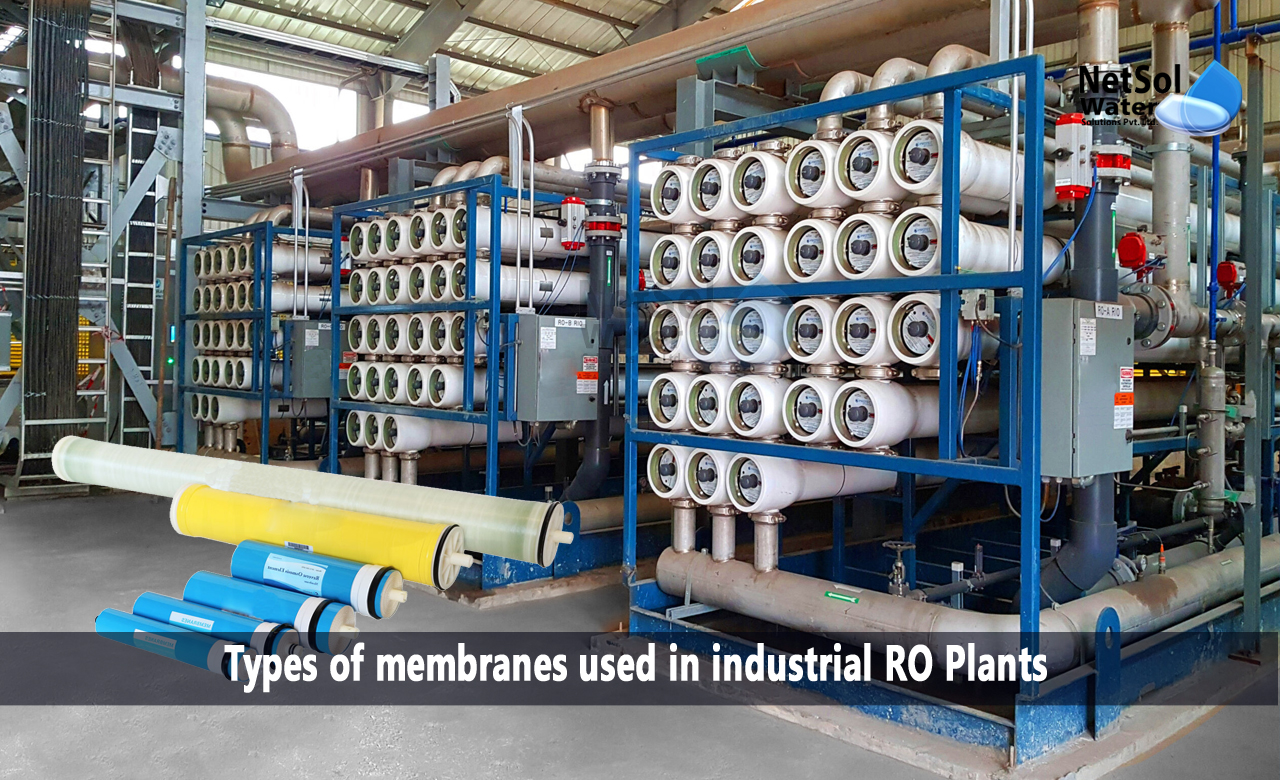The membrane of the Industrial RO Plant is the reason for the elimination of all chemicals from industrial water. The Industrial reverse osmosis plant uses a type of membrane with the tiniest pores possible; because of this, pure water molecules can readily pass through. This prevents the flow of organic compounds and bigger salt molecules.
How many types of membranes used in industrial RO Plants?
Hence, the Industrial RO Plants heart is its membrane. Let’s look at the type of membranes used in industrial RO Plants.
How do RO membranes operate?
For instance, the sodium chloride molecule cannot flow through the RO membrane because its pore size, 0.0005 microns, is less than that of the sodium chloride molecule. Moreover, it prevents the passage of organic molecules, such as bacteria, which are much larger than the RO pores.
1: Membrane types based on membrane shape
Although, membrane configurations can vary, spirally wound hollow fiber membranes are most frequently utilized. The type of membrane chosen affects the device's performance and overall effectiveness. This comprises:
· Low solids/liquids suitable membrane
These spaghetti-like membranes are composed of tens of thousands of hollow fibers, and they may be effectively kept clean using periodic backwashing and clean-in-place (CIP) procedures.
· Frames and plates membrane
These membranes are positioned inside a carrier plate, which is a device that resembles a plate and catches materials. They may be less effective than other filtration techniques and have a low packing density, but they are typically simpler to use and clean.
· Spiral wound Membrane
Among the most popular are spiral wound membranes. They are made up of flat membrane sheets sandwiched between spacers, which resemble mesh, which are looped around a central tube which collects the filtrate after filtration, and set inside a casing. They can be employed in high-volume applications with low suspended particles, and are reasonably small.
· Tubular Membrane
As a stream is passed through a number of tube-like membranes inside a pipe or shell, the permeate is transferred to the pipe or shell side.
TDS, TSS, oil, fat, and fatty ones are frequently employed for problematic streams, but can become less permeable at low packing densities.
2: Membrane types according to the type of filtration
1. Ultrafiltration
2. Nanofiltration
3. Reverse osmosis
Pore sizes can be adjusted in water purification membranes to maximize their effectiveness. For instance, unlike reverse osmosis membranes, river water purification does not require the use of extremely small pores. High pressure and a lot of energy are needed for reverse osmosis membranes to function.
As a result, it eliminates germs and other impurities from low-salinity water, such as river water or wastewater.
What do we offer?
Netsol Water has found successful and efficient membranes for the operation of industrial RO plants. With the help of these membranes, Industrial RO Plant works in the most effective and efficient way. The type of membrane depends upon the need of the clients.
We are also one of the most affordable businesses dedicated to protecting water resources. For any help, inquiry, or product purchase-related questions, call us at +91-9650608473 or send an email to enquiry@netsolwater.com



